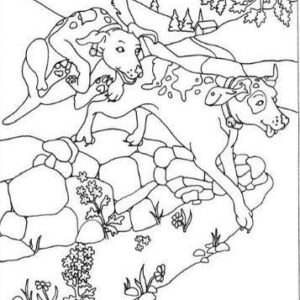The Timeless Beauty of Lotus Art: A Hidden Story in Every Petal
When you first glance at this striking black-and-white illustration, it’s easy to get lost in the elegance of its flowing lines and bold contrasts. Towering lotus flowers, sprawling leaves, and intricate water patterns come together to create an image that feels both peaceful and powerful. But look a little closer, and you’ll realize—this isn’t just a floral scene. There’s an entire story hidden within the details.
A First Look: Serenity in Black and White
The lotus has long been a symbol of purity, resilience, and enlightenment across cultures. In this artwork, the artist embraces a traditional style, using only black ink against a pale background to highlight the plant’s natural grace. Every petal, leaf vein, and ripple in the water has been crafted with deliberate precision, creating a scene that feels alive despite its monochrome palette.
But this isn’t just a botanical illustration—it’s a carefully designed visual puzzle. Amid the elegant leaves and flowers, hidden creatures and symbolic elements wait to be discovered, turning a simple glance into an engaging exploration.
The Lotus: Symbol of Strength and Renewal
Why does the lotus hold such a special place in art? It grows in muddy waters yet emerges pristine and beautiful. It’s a living metaphor for rising above life’s challenges without losing your purity or essence.
In this piece, the lotus blooms confidently above a tangle of stems and leaves, embodying that same sense of triumph. Its petals open toward the light, reminding us that growth often requires pushing through the darkness first.
Spotting the Hidden Details
Here’s where the real magic happens. At first, your eyes follow the graceful curves of the stems and the layered petals. But then—something catches your attention. Is that a butterfly resting on a leaf? And what’s that peeking out from the rippling water?
If you keep looking, you might find:
A Butterfly – Its wings patterned in harmony with the leaf veins, almost invisible until you notice its shape.
A Mythical Creature – At the lower right, emerging from the water, a face-like form takes shape. With its round eyes, teeth, and intricate markings, it resembles a traditional lion-dog or dragon motif often seen in Asian art.
Flowing Water Patterns – The ripples themselves seem to dance, their curves and spacing guiding your eyes toward hidden focal points.
This is the kind of art that rewards patience. The longer you look, the more it reveals.
The Art of Visual Storytelling
What makes this piece so captivating is how it blends nature and symbolism seamlessly. The lotus, often tied to spiritual growth, shares space with mythical elements—hinting at legends, guardianship, and the coexistence of beauty and strength.
In many Asian traditions, such guardian figures are believed to protect sacred spaces. Placing one amid lotus flowers could symbolize the safeguarding of purity and peace against negative forces.
Why Monochrome Works So Well Here
Without the distraction of color, the viewer is invited to focus on shape, texture, and form. The contrast between the dark ink and light background amplifies the depth of each petal and leaf, almost like a shadow play.
This minimalist approach also makes hidden details more challenging to spot. The lack of color means your eyes can easily be tricked into blending one shape with another—making every discovery feel more rewarding.
Engaging with the Artwork
The beauty of a piece like this isn’t just in looking at it—it’s in interacting with it. You can:
Trace the paths of the stems with your eyes to see how they guide the composition.
Try to count the lotus blossoms and buds—there’s more than you might expect.
Focus on the water’s surface and see how it blends into the forms beneath.
It’s a meditative experience. The more you engage, the more you notice.
Conclusion: More Than Meets the Eye
This lotus artwork is far more than a static image—it’s a layered story told in black ink. It celebrates the resilience and purity of the lotus while weaving in hidden symbols of protection and harmony. It challenges the viewer to slow down, pay attention, and uncover its secrets piece by piece.
Just like the lotus rising from the mud, the full beauty of this piece emerges only when you take the time to look beyond the surface. And in that process, you might find a little reflection of life itself—messy, intricate, but endlessly rewarding to explore.





